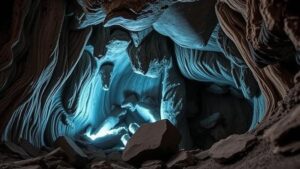How to Use Geological Cross-Sections to Locate Silver Deposits
How to Use Geological Cross-Sections to Locate Silver Deposits
The exploration for silver deposits is essential for various industries, including electronics, batteries, and jewelry. One effective tool in this exploration is the geological cross-section. This article delves into the fundamentals of geological cross-sections and their application in identifying potential silver reserves.
Understanding Geological Cross-Sections
Geological cross-sections are vertical slices through the Earth’s crust, revealing the arrangement, thickness, and nature of rock layers. e cross-sections provide a visual representation of the subsurface geology, which is crucial for locating valuable mineral deposits, including silver.
Key Components of Geological Cross-Sections
A geological cross-section typically includes several essential components:
- Stratigraphy: This refers to the layering of rocks, providing insights into the geological history and processes that formed the layers.
- Faults and Folds: Structural features such as faults and folds can indicate areas of mineral concentration due to tectonic processes.
- Mineralization Zones: These areas within the cross-section display the presence of minerals, including silver, often associated with specific rock types.
How to Analyze Geological Cross-Sections for Silver
To effectively use geological cross-sections to find silver deposits, one must analyze the features and characteristics within the context of known geology. Here are key steps to follow:
- Identify Geological Formations: Look for formations known to host silver deposits. For example, in North America, silver is often found in areas with volcanic and sedimentary rock formations.
- Examine Structural Geology: Analyze the presence of faults, as these can create pathways for hydrothermal fluids that may lead to silver mineralization.
- Review Historical Data: Use past data and explorations to correlate geology and mineralization trends in cross-sections.
Real-World Applications
Several mining companies utilize geological cross-sections in their exploration strategies. A pertinent example is the Hecla Mining Company, which has successfully located silver deposits in the Rocky Mountains. By using detailed geological cross-sections, they were able to pinpoint areas with favorable geological conditions for silver mineralization, leading to significant discoveries in their mining projects.
Case Studies of Successful Silver Exploration
One notable case is the discovery of the Greens Creek Mine in Alaska. The exploration team utilized geological cross-sections that revealed complex structural geology, including folds and faults. This information was crucial in identifying the location of high-grade silver deposits, ultimately leading to a successful extraction project.
Challenges in Using Geological Cross-Sections
While geological cross-sections are powerful tools, there are inherent challenges in their use:
- Data Availability: Not all regions have comprehensive geological surveys, making it difficult to construct reliable cross-sections.
- Interpreting Complex Structures: Geological features can be intricate, requiring expertise to avoid misinterpretation.
- Dynamic Geology: The subsurface geology can change due to erosion or tectonic activities, rendering previous cross-sections less relevant.
Actionable Takeaways
To wrap up, geological cross-sections are invaluable in locating silver deposits, provided they are utilized thoughtfully and skillfully. To optimize their usage:
- Invest in quality geological data and surveys.
- Incorporate multidisciplinary approaches, combining geology with geophysics and geochemistry.
- Train personnel in interpreting complex geological structures effectively.
By following these guidelines, geologists and mining companies can enhance their exploration strategies and increase the likelihood of discovering economically viable silver deposits.


